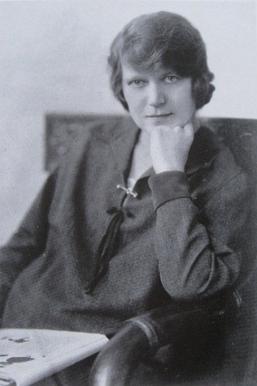- Home
- Local History
- William Brown and his creator Richmal Crompton
William Brown and his creator Richmal Crompton
Written by Pam Preedy.
‘Just’ William, as he became known as a result of the title of the first collection of stories in book form in 1922, was the creation of Richmal Crompton Lamburn, a 28 year old, unmarried teacher. A name familiar, if for no other reason, because the Wetherspoons opposite Bromley South station bears her name. Richmal, born in 1890 in Bury, Lancashire was educated at a school for the children of the Anglican clergy in Derbyshire and then, at Royal Holloway College, London University where she graduated in 1914 with a degree in Latin, French and Maths.
She obtained her post as a Classics Mistress at Bromley High School for Girls, then situated in Elmfield Road, Bromley in the summer of 1917. Before taking up the post, she and her mother moved to 9 Cherry Orchard Road on Bromley Common and she would cycle the three miles to the school each day. Because her employer had a rule that staff should have no other occupation without the headteacher’s permission and being uncertain as to whether free-lance writing counted as such, she played it safe and submitted her stories under the shorter version of her name.


(c) Ian Capper
When it was discovered that she was the author of short stories in ‘Punch’, the Head Teacher, Miss Hodge was delighted. Richmal was an inspirational teacher and organised the school dramatic and debating societies.
Disaster struck Richmal in the summer of 1923 when she contracted polio. By the following year, she could no longer teach, and she relied on her pen to provide an income. Such was the popularity of William and other stories that within a matter of years she had a large house, ‘The Glebe’, built for her on Oakley Road, Bromley Common where she lived until 1954 when she downsized to ‘Beechcroft’ a bungalow on Chislehurst Road. All three houses still exist.
The William stories were written for adults, but it soon became clear that children were also enjoying William’s escapades. In 1922, Newnes, the publisher issued the first collection of the magazine stories in book form. The final 38th volume ‘William the Lawless’, was published posthumously the year after Richmal’s death in January 1969, aged 78.
The William stories are set in a village, the location is never specified, but it is close enough to London for his father to commute daily to the city. In the early stories, the Brown family – father, mother and elder siblings Robert and Ethel – are sufficiently well off to employ a cook and a maid and to send William to private grammar school. William is a bright and intelligent boy, but an atrocious speller, and despite sudden enthusiasms, particularly for history, he is not a model pupil. William has a group of close friends he names ‘The Outlaws’. Ginger is his lieutenant; Henry is the best informed of the Outlaws and enjoys researching subjects, whilst Douglas is slightly gloomy and pessimistic.

(c) Ethan Doyle White, via Wikimedia Commons
The Outlaws use an abandoned barn as their headquarters and it is there that they first make the acquaintance of William’s nemesis Violet Elizabeth Bott, the seven-year-old lisping daughter of a self-made millionaire who has made his fortune selling ‘Botts’ Sauce’. Despite being told ‘we don’t like girls’; the Outlaws are unable to shake her off and she becomes a regular participant in their ventures. The Outlaws’ great adversary in the village is Hubert Lane and his friends the ‘Laneites’. Hubert is spoilt by his doting mother and in spite of his cunning ploys inevitable gets his comeuppence.
In addition to the William books, three feature films were made in the 1940s and there have been five separate television series since 1956, with the later series and the films being available on YouTube
Originally published in Life in Bromley magazine (Issue 26, April 2024)
